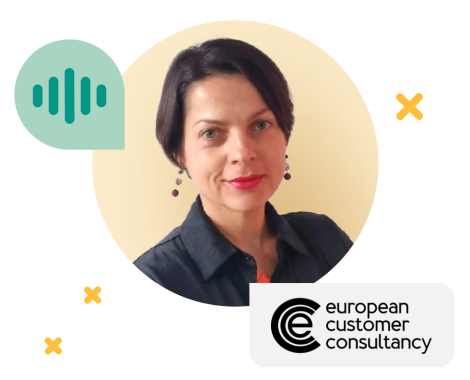Podcast
Join Olga Potaptseva and Sunny Dhami as they dive into the importance of setting a place for CX at the leadership table.
Share to
It’s super common to hear business owners say, “customers are at the heart of everything we do” or “the customer is always right.” But even with this mindset, CX is often left behind – it needs to be invited to sit at the leadership table and get involved in more conversations. Why? Because it’s what connects employees, customers, and operations.
In this episode of CX Education, we’re joined by Olga Potaptseva, the founding director of European Customer Consultancy (ECC). Olga discusses the importance of creating a human-centric culture rather than a customer-centric one and explains that such an approach helps retain top talent that’s motivated to work on a shared objective, such as customer retention.
Olga and our host Sunny Dhami, also touch upon the challenges of bringing CX to the leadership table and what it takes for an industry to achieve CX maturity.

Guest Speaker
Olga is the Founding Director for the European Customer Consultancy, an inventor of the globally certified Agile CX Implementation Toolkit and a founder of the first ever digital CX library called CXpanda.
Olga passionately believes in CX as a business discipline that drives financial, organisational, and social success. She promotes this through her consulting work, as well as her role as the Executive Director at the Customer Institute, Founding Member for Women in CX, a chair of Judges at the CX Awards, an educator, author and speaker. Olga gets a lot of inspiration for her work from her international lifestyle and her family.

Host
Sunny Dhami is a product marketing leader with 12+ years’ experience in Marketing and Product Marketing roles across the CPaaS, SaaS, communications, and technology industries. In this time, he has held responsibilities within global product marketing functions and has been fortunate enough to have worked in high-growth organisations like Sinch and RingCentral, where he has supported triple digit revenue growth.

Check out other episodes of CX Education and find out what the buzz is all about!